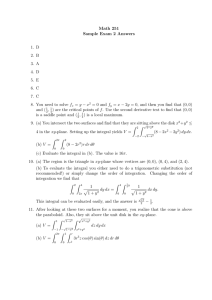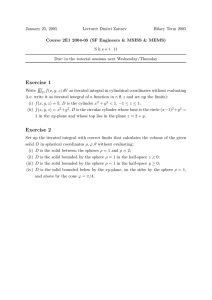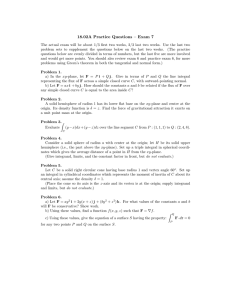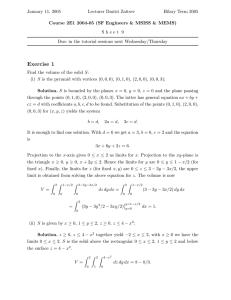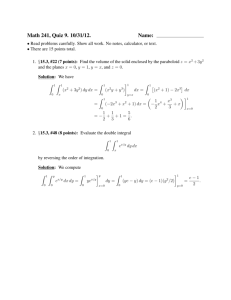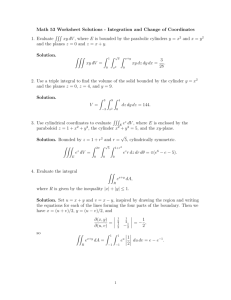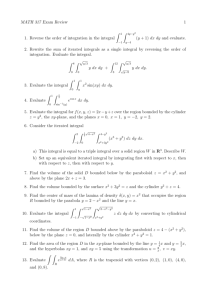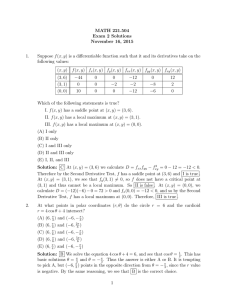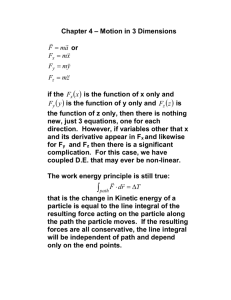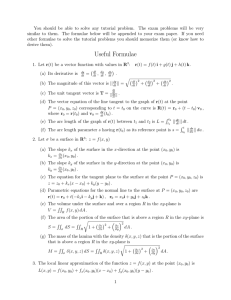Math 221 Final Exam Sample Problems Sections 13.8–13.10, 14.1–14.9 December 4, 2015
advertisement
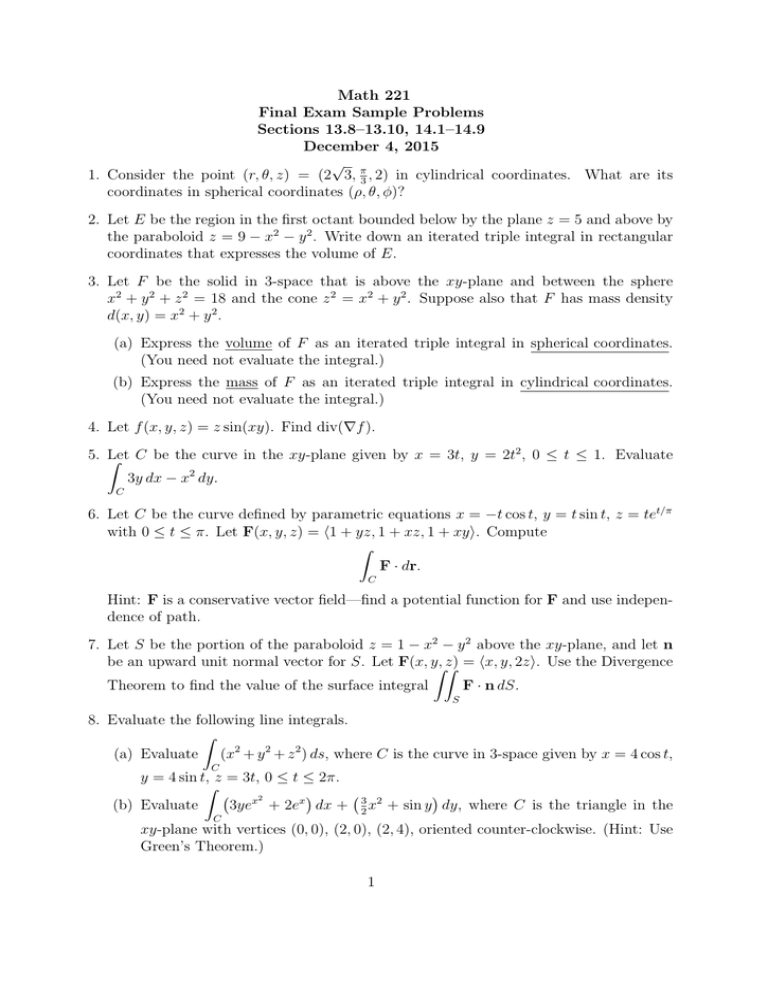
Math 221 Final Exam Sample Problems Sections 13.8–13.10, 14.1–14.9 December 4, 2015 √ 1. Consider the point (r, θ, z) = (2 3, π3 , 2) in cylindrical coordinates. What are its coordinates in spherical coordinates (ρ, θ, φ)? 2. Let E be the region in the first octant bounded below by the plane z = 5 and above by the paraboloid z = 9 − x2 − y 2 . Write down an iterated triple integral in rectangular coordinates that expresses the volume of E. 3. Let F be the solid in 3-space that is above the xy-plane and between the sphere x2 + y 2 + z 2 = 18 and the cone z 2 = x2 + y 2 . Suppose also that F has mass density d(x, y) = x2 + y 2 . (a) Express the volume of F as an iterated triple integral in spherical coordinates. (You need not evaluate the integral.) (b) Express the mass of F as an iterated triple integral in cylindrical coordinates. (You need not evaluate the integral.) 4. Let f (x, y, z) = z sin(xy). Find div(∇f ). 5. Z Let C be the curve in the xy-plane given by x = 3t, y = 2t2 , 0 ≤ t ≤ 1. Evaluate 3y dx − x2 dy. C 6. Let C be the curve defined by parametric equations x = −t cos t, y = t sin t, z = tet/π with 0 ≤ t ≤ π. Let F(x, y, z) = h1 + yz, 1 + xz, 1 + xyi. Compute Z F · dr. C Hint: F is a conservative vector field—find a potential function for F and use independence of path. 7. Let S be the portion of the paraboloid z = 1 − x2 − y 2 above the xy-plane, and let n be an upward unit normal vector for S. Let F(x, y, Z Zz) = hx, y, 2zi. Use the Divergence F · n dS. Theorem to find the value of the surface integral S 8. Evaluate the following line integrals. Z (a) Evaluate (x2 + y 2 + z 2 ) ds, where C is the curve in 3-space given by x = 4 cos t, C y = 4 sin t, z = 3t, 0 ≤ t ≤ 2π. Z 2 (b) Evaluate 3yex + 2ex dx + C 3 2 x 2 + sin y dy, where C is the triangle in the xy-plane with vertices (0, 0), (2, 0), (2, 4), oriented counter-clockwise. (Hint: Use Green’s Theorem.) 1 9. Let F = 2yi − 2xj be a vector field in the xy-plane. Let C be the unit circle oriented counterclockwise, and let R be the closed unit disk. I (a) According to Green’s Theorem, F · dr is equal to what iterated double integral in rectangular coordinates? I (b) Evaluate F · dr directly. C C (c) Evaluate the double integral you provided in part (a) directly. ZZ 10. Use Stokes’ Theorem to calculate the surface integral (curl F) · n dS, where S is S the part of the paraboloid z = 9 − x2 − y 2 above the xy-plane, n is the outward unit normal, and F = hz + y, z − x, 2zi. 11. Let S be the graph of f (x, y) = x2 + y 2 above the unit disk R in the xy-plane. The boundary of S is the circle C that is a translate of the usual unit circle in the xy-plane, 1 unit directly upward. Let F = yi − xj + yzk. Use Stokes’ Theorem to evaluate I F · dr, C where C is oriented counter-clockwise. 2
